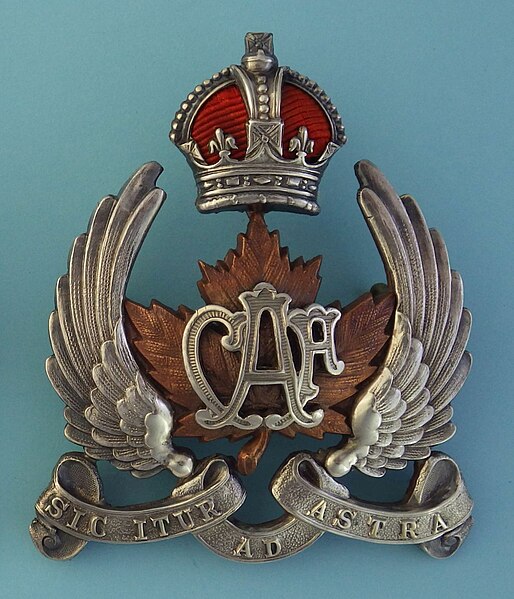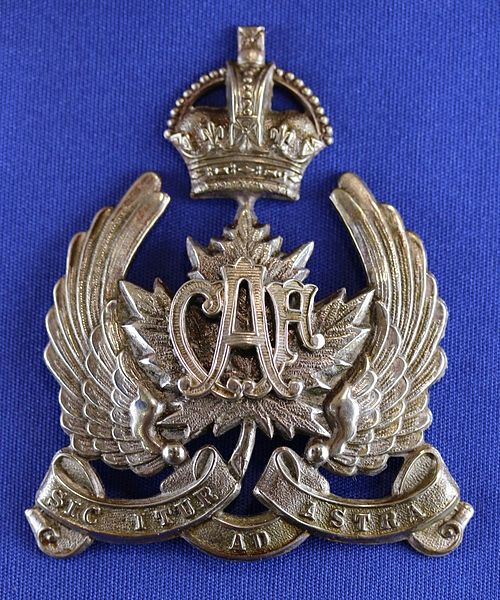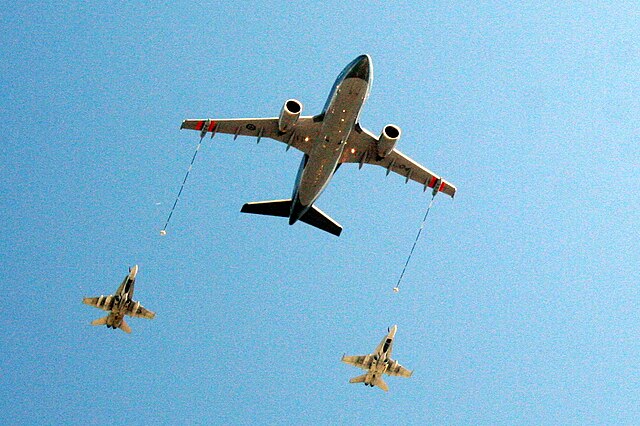Canadian Air Force (1920–1924)
The Canadian Air Force (CAF) was the initial, non-permanent peacetime air force formed by Canada after the First World War. When the Air Board was formed in 1919 to manage Canadian aviation, one of its responsibilities was air defence; the CAF was formed to meet this responsibility. The CAF was officially retitled the Royal Canadian Air Force (RCAF) on 12 March 1923, and then dissolved on 31 March 1924 to allow the permanent Royal Canadian Air Force (RCAF) to be formed the following day.
Officer's cap badge for the peaked service dress hat from the 2nd issue (with motto) c. 1920
Officer's cap badge for the wedge hat from the 2nd issue (with motto) c. 1920
NCO's cap badge from the 1st issue (without motto) c. 1919
NCO's cap badge for the peaked service dress hat from the 2nd issue (with motto) c. 1920
The Royal Canadian Air Force is the air and space force of Canada. Its role is to "provide the Canadian Forces with relevant, responsive and effective airpower". The RCAF is one of three environmental commands within the unified Canadian Armed Forces. As of 2020, the Royal Canadian Air Force consists of 12,074 Regular Force and 1,969 Primary Reserve personnel, supported by 1,518 civilians, and operates 258 manned aircraft and nine unmanned aerial vehicles. Lieutenant-General Eric Kenny is the current Commander of the Royal Canadian Air Force and Chief of the Air Force Staff.
Two armourers of No 440 Squadron RCAF re-arming a Hawker Typhoon in the Netherlands, 1944
An RCAF CIM-10 Bomarc missile on a launch erecter in North Bay. Viewed as an alternative to the scrapped Avro Arrow, the Bomarc's adoption was controversial given its nuclear payload.
An RCAF CF-18 Hornet during Operation Impact, 2015. CF-18s have been used by the RCAF since 1983.
An RCAF CC-150 Polaris refuelling two CF-18 Hornets near CFB Borden








